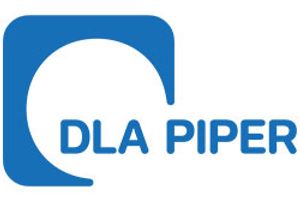Construction Arbitration in Australia
This is an Insight article, written by a selected partner as part of GAR's co-published content. Read more on Insight
The construction industry in Australia stands as a vibrant and crucial sector driving economic growth and development across the nation. With its diverse landscape, booming urban centres and a robust infrastructure demand, the industry is pivotal in shaping the country’s modern landscape.
The construction market is projected to experience substantial growth, with its size anticipated to rise from US$163.34 billion in 2023 to US$213.31 billion by 2028.[2] This expansion is expected to be driven primarily by significant investments in infrastructure, coupled with technological innovations driving advancement and efficiencies.
The construction sector in Australia contributes around A$360 billion in revenue and has an estimated workforce of 1.15 million.[3] Employment within the construction industry continues to see steady growth and, despite a decline in employment during 2020 and 2021, projections indicate a potential increase to more than 1.3 million jobs by 2025.[4]
In stark contrast to this positive outlook is the fact that Australian construction companies continue to enter into administration at a rate that is more than twice as high as other industries;[5] profit margins in the industry have decreased from around 3 per cent to 1 per cent[6] and liquidity has decreased in the order of 10 per cent.[7] Challenges with skilled labour shortages and project delays continue to persist.
Against this backdrop, the prominence of arbitration remains strong with both domestic and international parties. Although international parties are often familiar with arbitration, given its use in other jurisdictions within which they operate, arbitration finds favour among domestic parties by virtue of its inclusion as the standard mechanism of dispute resolution in a number of Australian standard construction contracts, commonly used across the industry.
As has been the general trend in Australia in recent years, the decision to arbitrate rather than litigate remains heavily influenced by the preferences of the individual parties involved – particularly the principal party – and various project-specific factors that tend to lend towards resolution by arbitration rather than litigation; for example, where confidentiality is a particular concern. Those who have a preference broadly favour arbitration for its confidential nature, greater flexibility, when compared with court processes, and resultant procedural control. There remains considerable debate, though, as to whether arbitration, at least in the domestic context, offers any meaningful time or cost benefits to participants.
Domestic and international arbitration regimes
Australia has a bifurcated arbitration regime with separate legislative instruments governing both domestic and international arbitration.
International arbitration is governed by the International Arbitration Act 1974 (Cth) (IAA). The IAA gives force to the United Nations Commission on International Trade Law (UNCITRAL) Model Law on International Commercial Arbitration (the Model Law) in Australia,[8] but also includes a number of supplementary provisions, such as:
- Section 22, which provides that the confidentiality provisions (Sections 23C to 23G) apply on an opt-out basis;
- Section 23, which concerns the parties’ rights to obtain subpoenas;
- Section 18B, which expressly disallows ex parte preliminary orders under Article 17B of the Model Law; and
- Section 19, which clarifies the meaning of the term ‘public policy’ for the purposes of Articles 34 and 36 of the Model Law.
Parties are free to consider whether, and to what extent, they wish to opt out of any non-mandatory provisions under the IAA or opt into any provisions that do not apply automatically (e.g., the consolidation provision in Section 24 of the IAA).[9]
At a domestic level, commercial arbitration is governed by the Commercial Arbitration Acts (CAAs) of the various states and territory,[10] which each closely mirror the Model Law. Arbitration will be domestic, and thus governed by the CAAs, if, among other things: ‘the parties to an arbitration agreement have, at the time of the conclusion of that agreement, their places of business in Australia’[11] and ‘it is not an arbitration to which the Model Law (as given effect by the International Arbitration Act 1974 of the Commonwealth) applies’.[12] If a party has more than one place of business, the relevant place of business is that which has the ‘closest relationship to the arbitration agreement’.[13]
Arbitration agreements
It is well established in Australia that to invoke arbitration as the means of resolving disputes, parties must enter into an arbitration agreement under which they expressly agree to arbitrate. Generally, this is contained in (1) the dispute resolution provisions of the relevant construction contract reduced to writing or (2) a separate, written agreement between the parties to proceed to arbitration when a dispute arises. For international arbitration specifically, an arbitration agreement can also appear in an exchange of letters or in pleadings.[14]
Arbitration agreements typically specify the seat of the arbitration, the substantive law, the number of arbitrators and the language of the arbitration. At an international level, arbitration agreements also commonly provide for procedural matters, for example, by reference to the International Bar Association’s ‘Rules on the Taking of Evidence in International Arbitration’.
Section 8(1) of the CAAs imports a presumptive validity of arbitration agreements and the onus lies on the party resisting a stay of proceedings to show that the arbitration agreement is inoperative.
However, multi-tiered dispute resolution processes remain a common feature of construction contracts in Australia. These clauses typically require the parties to engage in a number of compulsory steps, starting with negotiation between senior managers or executives before moving to expert determination or formal mediation and, last, resolution of the dispute by arbitration or litigation. This has given rise to disputes in which a party commences arbitration without engaging in the preceding procedures mandated by the agreement, and the party wishing to enforce the required procedures seeks a stay of that arbitration.
The decision in WCX M4-M5 Link AT Pty Ltd v. Acciona Infrastructure Projects Australia Pty Ltd (No. 2)[15] is a prime example of this. The contract in question contained a dispute resolution clause that was tiered and required parties to follow a process of negotiation, expert determination, arbitration and then possibly an appeal to the court on points of law.
All parties agreed that the tiered dispute resolution clause was an arbitration agreement; however, the plaintiffs argued that the arbitration agreement was inoperative on the basis that it was a condition precedent for arbitration that one of the parties first submit a notice of dissatisfaction following expert determination, and this precedent had not been satisfied.
The court held that failure to complete preliminary steps in a tiered dispute resolution clause before arbitration does not make the clause inoperable. Such a construction would undermine the object of the CAA, depart from the interpretation of the term more widely and enable a party to bypass their contractual bargain to submit their disputes to arbitration by commencing arbitration before all preliminary steps have been completed.[16]
This decision reflects the foundational principle of upholding the primacy of party choice by seeking to apply the parties’ intentions as enshrined in the relevant arbitration agreement.
Arbitration is prescribed in various standard form construction contracts used in the industry; for example, Standards Australia’s AS 4000-1997 (General Conditions of Contract (unamended)) requires arbitration as the final step in a tiered dispute resolution clause. Similar referral of disputes to arbitration is included as a standard term in AS 4902 and AS 4300 (General Conditions of Contract for Design and Construct).
As is the usual course, parties using Standards Australia contracts enter into the General Conditions of Contract, set out the particulars for various clauses of the General Conditions in Annexure A and make any deletions, amendments or additions to the General Conditions in Annexure B.
The pro-arbitration approach traditionally shown by the Australia courts is apparent in the decision of the Victorian Supreme Court in Gemcan Constructions Pty Ltd v. Westbourne Grammar School in 2020.[17] The judge in this case, the Honourable Kevin Lyons, considered whether the use of the notation ‘not applicable’, which along with ‘NA’, are frequently used in Annexure Part A to designate certain clauses or optional drafting within Australian Standard contracts not applying, meant that the construction contract did not contain a valid arbitration agreement within the meaning of Section 7 of the Victoria CAA.
Gemcan had been engaged by Westbourne Grammar School (WGS) to undertake certain work at the school’s Williamstown campus pursuant to an AS 4000-1997 contract. A dispute arose between the parties about variations, extensions of time and liquidated damages (among other things). The dispute resolution clause (clause 42) relevantly provided, among other things:
If the dispute has not been resolved within 28 days of service of the notice of dispute, that dispute shall be and is hereby referred to arbitration.
It also provided:
If within a further 14 days the parties have not agreed upon an arbitrator, the arbitrator shall be nominated by the person in Item 32(a). The arbitration shall be conducted in accordance with the rules in Item 32(b).
However, items 32(a) and 32(b), respectively, in Annexure Part A were completed with the words ‘not applicable’.
Lyons J held that an agreement to arbitrate was evident in the terms of the contract because:
- clause 42.2 is ‘clear and unambiguous in its terms’. ‘The last sentence of the standard-form clause evinces a clear and objective intention that disputes arising under the clause are to be referred to arbitration if they are not resolved within 28 days of the notice of dispute issuing’;[18]
- the use of the words ‘not applicable’ in items 32(a) and 32(b) of Annexure Part A ‘do not evince an intention to negate the referral to arbitration because they only refer back to clause 42.3’, not clause 42.2.[19] Clause 42.3 provides only for the procedural aspects of the arbitration, not the agreement to arbitrate itself. In the absence of an agreement regarding procedural aspects (including the arbitrator to be appointed and applicable rules), Sections 11(3) and 19(2) of the Victoria CAA steps in to provide a mechanism for decisions to be made on those issues. Those procedural mechanisms ‘are not essential characteristics of an enforceable arbitration agreement’;[20]
- the parties could have used Annexure B to make necessary amendments to delete the offending words from clause 42.2 but did not do so.
Finally, the South Australia decision in Tesseract International Pty Ltd v. Pascale Constructions has raised questions as to whether there are outer limits to parties’ choice of substantive law (i.e., the law governing the determination of the dispute) and, if so, the basis of any such outer limit.[21] The question arises out of a perceived tension between party choice (being the foundational principle of arbitration) and the proper role of municipal law in constraining that choice. It is anticipated this legal quandary will be resolved by the High Court of Australia in late 2023.[22]
Alternatives to arbitration
Expert determination
The use of expert determination as an alternate form of dispute resolution to arbitration remains relatively common. Whereas in the more traditional model the expert determiner had a limited role, say to act as an independent assessor or valuer and to provide certainty as to a particular issue only, the more modern form of expert determination is used as a mechanism to resolve all or particular categories of disputes arising under a contract.[23]
Whether expert determination provides any substantive benefits to parties over that of arbitration is open to debate. When used wisely, which might be to determine a discrete or complex technical issue, it can be relatively effective in respect of both cost and time. However, if expert determination is mandated in a contract as the default form of dispute resolution, and which is to apply to a broad range of different types of disputes, then the obvious time and cost benefits might quickly be lost.
Parties wishing to utilise expert determination should take care to ensure that the nature and conduct of the expert determination is comprehensively documented in the construction contract (or separate agreement forming part of the contract). Caution should be taken to ensure that the terms of the expert determination agreement cannot be construed as forming an arbitration agreement, which would attract the application of either the CAAs or the IAA.
Dispute boards
The use of dispute boards (also known as dispute resolution boards or dispute avoidance boards) in major infrastructure projects is growing in Australia. Although dispute boards can take various forms, the Dispute Resolution Board Foundation for Australia and New Zealand (Region 3) considers ‘best practice’ to be as follows:
- a 3 person Dispute Board . . . ;
- . . . empowered to engage in pro-active dispute avoidance via regular site visits and meetings with the parties;
- includ[ing] the ability to issue advisory opinions, if jointly requested by the parties;
- the parties can refer disputes to the Dispute Board for a decision, which is interim binding . . .[24]
There are though numerous alternative forms of dispute boards, some of which include a binding dispute resolution process.
Whereas expert determination has, in many instances, been adopted as an alternative form of dispute resolution to arbitration, dispute boards largely remain a complementary process that does not prevent parties in dispute to refer that dispute to a more formal process, such as arbitration or litigation.
Security for payment
There is also a statutory adjudication regime in Australia, referred to as ‘security of payment’, that applies to contracts for construction work, the supply of related goods and services, and the preparatory word done in anticipation of construction (such as design consultancy services). The security for payment regime is intended to facilitate timely payment by principals and head contractors along the contractual chain by adopting a ‘pay now, argue later’ approach. Every state and territory has introduced its own security for payment legislation, which runs concurrently with entitlements under a construction contract. Claims for payment can be referred to adjudication even if the formal dispute resolution process mandated in the construction contract had commenced. Decisions made by adjudicators are interim in nature but are binding on parties until their final rights and obligations are determined through a binding process, such as arbitration or litigation.
Non-arbitral construction disputes
As noted above, the Australian courts are largely considered pro-arbitration and adopt a broad approach to the interpretation of arbitration agreements.[25] Only in exceptional circumstances – where it is null and void, inoperable or incapable of being performed – will the courts tend to find that an arbitration agreement is too uncertain to be enforced. Unless these exceptional circumstances apply, the courts are obliged under both the IAA and the CAAs to refer a dispute to arbitration and have no discretion to do otherwise.
An arbitration agreement can refer any type of construction dispute to arbitration, including future disputes, provided the dispute is arbitrable. The most notable exceptions to this general proposition are domestic building contracts in Victoria,[26] New South Wales[27] and the Northern Territory,[28] where arbitration clauses are prohibited.
The Insurance Contracts Act 1984 (Cth)[29] also prohibits arbitration clauses in contracts of insurance, which may result in proceedings being on foot in two different forums if claims are commenced between the contracting parties and separately by one party on a policy of insurance, as sometimes happens in large construction disputes.
Arbitration of non-contractual disputes
Construction work or projects undertaken in Australia, even if the relevant contract is expressed to be governed by a law other than Australian law, are subject to the Australian Consumer Law (ACL)[30] and other acts that are unique to the jurisdiction. Parties cannot contract out of or modify the application of the ACL in their construction contracts. The ACL has extraterritorial application.[31]
The ACL is a unique but fundamental piece of legislation in Australia that governs the way businesses operate in trade or commerce and sets out a series of basic rights, or consumer guarantees, which provide fundamental protections for consumers. Relevantly to the construction industry, claims continue to be seen alleging unconscionable conduct,[32] misrepresentation[33] or misleading and deceptive conduct,[34] the latter sometimes alleged to have occurred in pre-contractual negotiations. Notwithstanding the existence of an entire agreement clause in the construction contract to exclude pre-contractual negotiations or statements from the terms of the contract itself or a ‘no reliance’, the operation of the ACL cannot be avoided.
Thus, parties are well advised to take care in the drafting of their arbitration agreements to ensure that they are sufficiently broad or narrow to cover the scope of the disputes that they intend to arbitrate, and do not inadvertently require non-contractual claims to be referred to arbitration. This situation was considered in Cheshire Contractors Pty Ltd v. Civil Mining & Construction Pty Ltd,[35] in which Justice Henry ultimately held that a dispute resolution clause requiring ‘disputes or differences arising between the parties’ to be referred to arbitration was broad enough to capture Cheshire’s claims for estoppel by convention and damages pursuant to Sections 236 and 237 of the ACL for Civil Mining & Construction’s alleged unconscionable conduct, as distinct from arbitration agreements that apply only to disputes regarding claims under an agreement or ‘arising out of or related to this agreement’.[36] A similar issue arose in Tesseract International Pty Ltd v. Pascale Construction Pty Ltd[37] with regard to the proportionate liability regime. In Australia, common law principles of joint and several liability have been replaced with a statutory regime that divides responsibility between the various concurrent wrongdoers, according to the degree of responsibility of each for the loss. In a practical sense, this means that a claimant will be able to claim only a portion of its total loss from each wrongdoer, and needs to pursue each of the ‘concurrent wrongdoers’ to recover all its alleged losses.
In this case, the South Australian Court of Appeal issued a ruling on the question of whether proportionate liability laws from state and federal legislation can be applied in arbitration. The Court decided that these laws do not automatically apply to an arbitration unless there is a specific agreement to that effect in the arbitration agreement.
This decision is significant as it clarifies that proportionate liability laws, which often allow plaintiffs to join third parties in court proceedings, are not intended to apply to arbitration by default.[38]
As domestic arbitration legislation is based on the UNCITRAL Model Law, this decision is reflective of uniform best practice. As an intermediate appellate court decision, the principles established by Tesseract are likely to have wider implications and be followed in other Australian jurisdictions. This decision is particularly important for those involved in arbitration across Australia, especially in cases where duties of care may be an issue.
Enforcement of arbitration awards
Pursuant to Sections 8(1), 8(2) and 8(3) of the IAA, a foreign arbitral award made in a country that is a party to the Convention on the Recognition and Enforcement of Foreign Arbitral Awards (the New York Convention) is binding on the parties to the award and is enforceable by an Australian court as though the award is a judgment or order of the relevant court, unless the exceptions listed in Section 8, Paragraphs (5) and (7) of the IAA apply.
These grounds are largely set out in Article V of the New York Convention and Article 36 of the Model Law, which, in the context of setting aside an award, are the same as those in Article 34 of the Model Law.
The state and territory supreme courts and the Federal Court of Australia all have jurisdiction under the IAA and the CAAs to enforce arbitration awards.
Footnotes
[1] Richard Edwards and Cameron Scholes are partners and Laura Nagy is a special counsel at DLA Piper.
[2] Mordor Intelligence, ‘Construction Industry in Australia Size & Share Analysis - Growth Trends & Forecasts (2023 - 2028)’, 2022.
[3] ibid.
[4] ibid.
[5] Australian Constructors Association, ‘All Risk No Reward: Fixing the building industry’s profitless boom’, July 2023.
[6] ibid.
[7] ibid.
[8] International Arbitration Act 1974 (Cth) (IAA), Section 16.
[9] DLA Piper, ‘Commercial Arbitration: Australia’ (Global Arbitration Review, Know-How), Questions 10 and 14.
[10] Commercial Arbitration Act 2013 (Qld); Commercial Arbitration Act 2010 (NSW); Commercial Arbitration Act 2017 (ACT); Commercial Arbitration Act 2011 (Vic); Commercial Arbitration Act 2011 (SA); Commercial Arbitration Act 2011 (Tas); Commercial Arbitration Act 2012 (WA); and Commercial Arbitration (National Uniform Legislation) Act 2011 (NT) (together, CAAs).
[11] CAAs, Section 1(3).
[12] ibid.
[13] id., Section 1(4).
[14] The agreement may take any form but must be in writing, per the definition accorded by the IAA at Section 3(4).
[15] [2022] NSWSC 505.
[16] id., at [119].
[17] Gemcan Constructions Pty Ltd v. Westbourne Grammar School [2020] VSC 429.
[18] id., at [46].
[19] id., at [47].
[20] id., at [53].
[21] [2022] SASCA 107.
[22] See High Court Case No. A9/2023.
[23] See D Jones, ‘Expert Determination and Arbitration’ (2001) 67(1), The Journal of the Chartered Institute of Arbitrators (February 2001).
[24] See Owen Hayford, ‘Best Practice Dispute Board Models’ (infralegal, webpage, 16 March 2023).
[25] See, e.g., Rinehard v. Hancock Prospecting Pty Ltd [2019] HCA 13.
[26] Domestic Building Contracts Act 1995, Section 14.
[27] Home Building Act 1989, Section 7C.
[28] Building Act 1993, Section 54BA(2)(b).
[29] Insurance Contracts Act 1984 (Cth), Section 43(1).
[30] Competition and Consumer Act 2010 (Cth), Schedule 2 (The Australian Consumer Law) (ACL).
[31] Valve Corporation v. ACCC [2017] FCAFC 224.
[32] ACL, Section 21.
[33] id., Section 4.
[34] id., Section 18.
[35] Cheshire Contractors Pty Ltd v. Civil Mining & Construction Pty Ltd [2021] QCA 212.
[36] The phrase ‘arising out of or related to this agreement’ was considered by the New South Wales Court of Appeal in IBM Australia Ltd v. National Distribution Services Pty Ltd (1991) 22 NSWLR 466 and found to be sufficiently broad to capture equitable and statutory claims relating to the agreement.
[37] Tesseract International Pty Ltd v. Pascale Construction Pty Ltd [2022] SASCA 107.
[38] At the time of writing, this decision was the subject of an appeal to the High Court of Australia.






